Articles & Features
Narrated By Contemporary Art:
The Darkness Of The Fairytale Reimagined
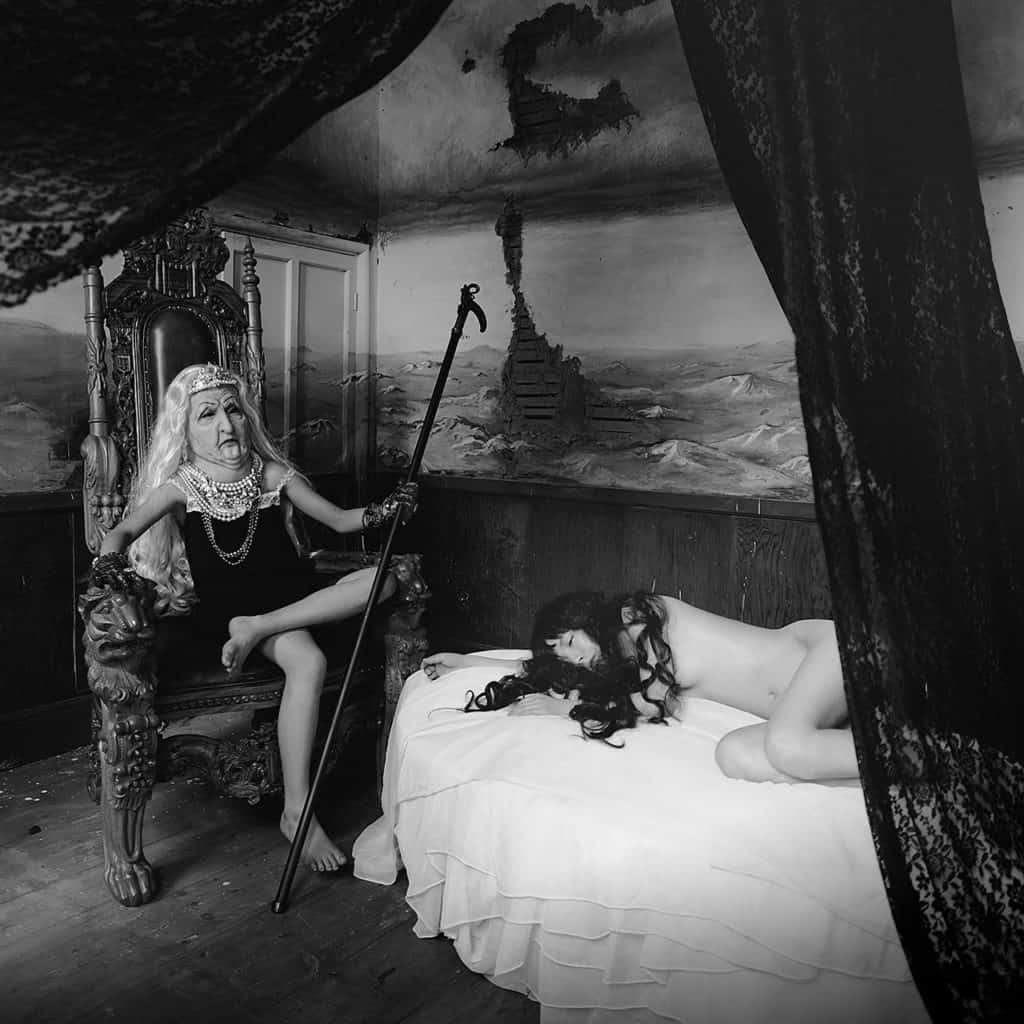
By Naomi Martin
“Never had she danced so beautifully; the sharp knives cut her feet, but she did not feel it, for the pain in her heart was far greater.”
Hans Christian Andersen, The Little Mermaid
When we think about fairy tales, our minds often wander towards princes and princesses, castles, a soupçon of magic and most of all, a happy ending. But the deceptively naïve tales we are familiar with today are often remarkably complex underneath, they are the sugar-coated versions of exceptionally gruesome and disturbing legends. For those who aren’t fooled by light-hearted Disney escapades, often diminishing the power of its heroines, the grim undertones of fairy tales are often fascinating, the unvarnished originals often chilling in their stark depiction of human moral frailty. Accounts of torture, heartbreak, cannibalism, rape and incest abound – the dark side of fairy tales are not easily forgotten, and certainly more powerful than the bland versions we collectively grew up with before bedtime.
Enchanted with the duality echoing at the core of these popular stories, many artists have explored the narrative framework of fairy tales, attempting to restore their complexity and inherent darkness. Here, we take a look at a few contemporary artists who have been deconstructing, through their work, the imagery most commonly associated with fairy tales, thus investigating and reinventing their cryptic themes and sombre endings.
David Hockney
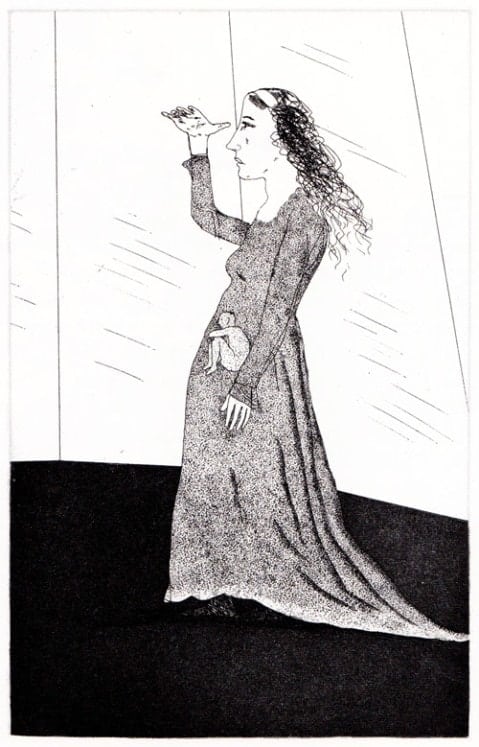
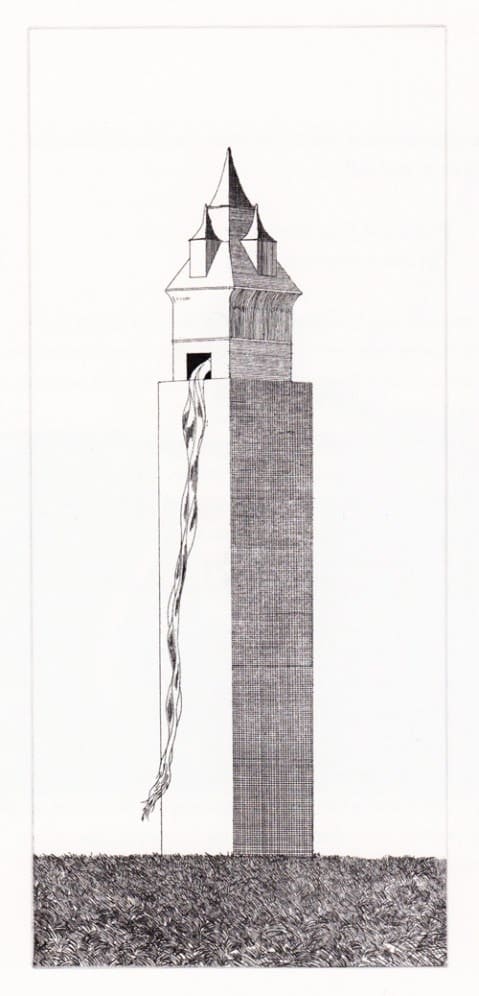
As one of the most influential British artists of the 20th century, David Hockney is best known for his contribution to the British Pop Art movement of the 1960s, his serial paintings of swimming pools, as well as his semi-abstract landscapes of California and Yorkshire, his twin habitation loves. Although Hockney undeniably is a master of vivid colours, his talents as storyteller can be grasped in his visual take on the Grimm tales, a series of 39 monochromatic etchings. Plain and uncluttered at first glance, these prints validate Hockney’s technical mastery, revealing a seamless manipulation of lines and textures.
After reading the complete 220 stories collected by the Brothers Grimm, Hockney selected six tales which particularly challenged his imagination, giving each his unique visual interpretation and depicting their psychological themes and supernatural oddities in his own terms. These brilliant etchings for The Little Sea Hare, Fundevogel, Rapunzel, The Boy Who Left Home to Learn Fear, Old Rinkrank, and Rumpelstilzchen were originally published in Six Fairy Tales from the Brothers Grimm with Illustrations by David Hockney, by the British Royal Academy of Arts, in 1970. Hockney’s depiction of the tales is especially fascinating because of the sharp contrast between the traditional, adorned and excessive imagery commonly associated with fairy tales, and his unassuming graphic black and white portrayal of princesses, the use of negative space and starkly haunting architectural illustrations.
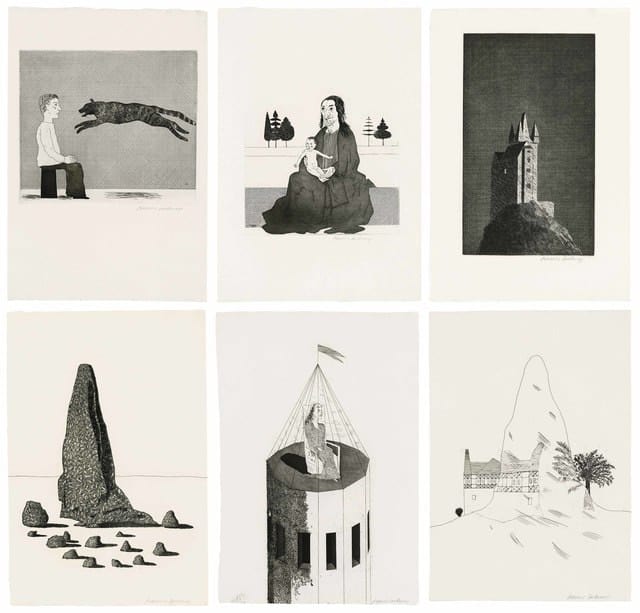
Paula Rego
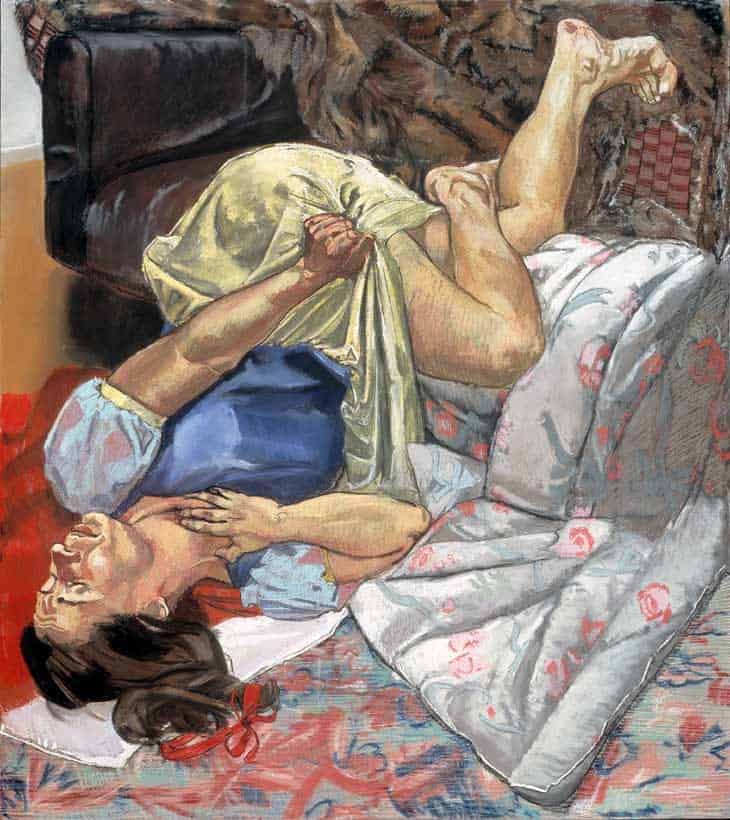
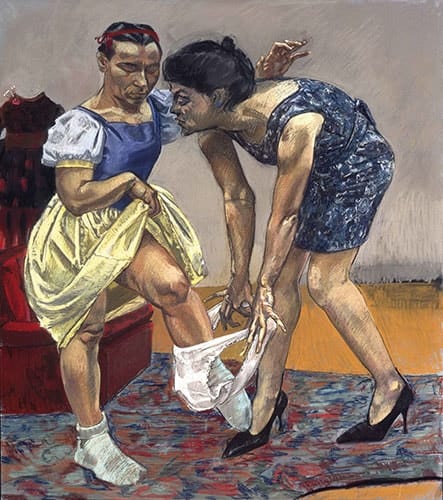
Paula Rego is another accomplished storyteller, who has been drawing upon the fairy tales we know so well – combined with her own life story – to create often unsettling tableaux impregnated with a subtle yet striking ambiguity. Rego has always been enthralled with the complexity of the tales and myths defining our modern culture, and has endeavoured to reinvent these stories with a darker stance, brimming with mystery and cruelty.
In her reinterpretation of Snow White, the fairy tale converges with horror, adding a twist of psychological violation and sexual intrigue. The complexity of the mother-daughter relationship is at play in Snow White and Her Stepmother, where Rego depicts the mortifying experience of the young woman’s purity being tested to consider her suitability to marry, underlining a disturbing picture of power games and humiliation. In Swallows The Poison Apple, Snow White isn’t the young, fair and beautiful princess we are familiar with anymore, but instead a tortured young woman, desperately clutching her dress in a suggestive yet demeaning pose, thus hinting at the pain and violence of her demise.
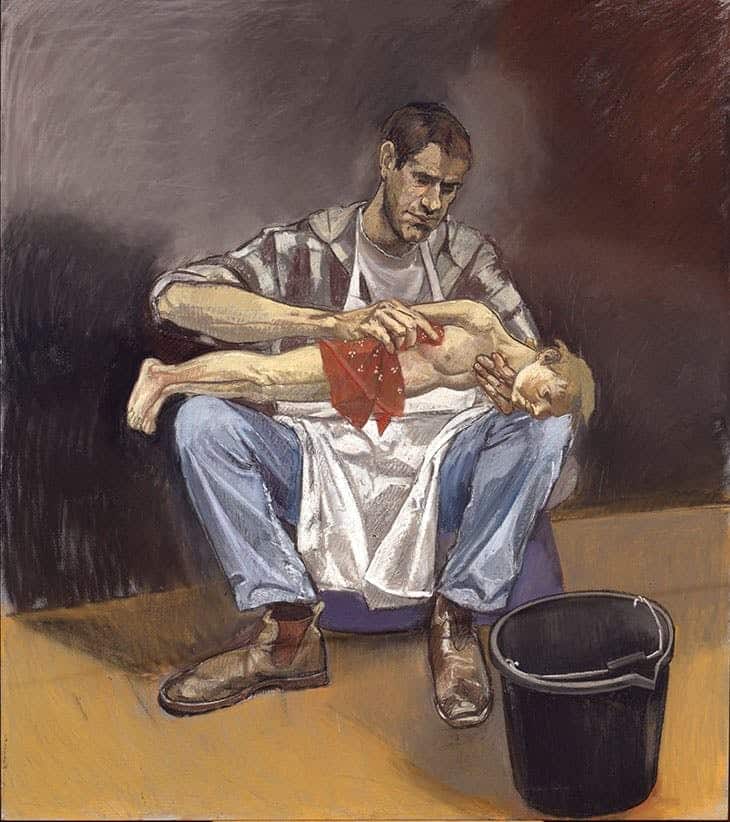

“Throwing the rope over the high limb of a giant oak tree, they pulled till the poor marionette hung far up in space. Satisfied with their work, they sat on the grass waiting for Pinocchio to give his last gasp.”
Carlo Collodi, Pinocchio
Rego’s sinister, reframed fairy tales always come with an underlying notion that nothing is as it seems. In The Blue Fairy Whispers to Pinocchio, the fairy is a mysterious figure, manifesting somewhere between good and evil, threateningly enclosing on the small Pinocchio, who clenches his hands in revulsion. The scene is ambiguous and tense, as with Geppetto washing Pinocchio, which emanates an uncomfortable implication of perversion. With these somber tableaux, Rego gets closer to the original tale of Pinocchio as written by Carlo Collodi in 1883, markedly departing from the over-sweetened Disney version which has pervaded the collective impression of the story.
Kiki Smith
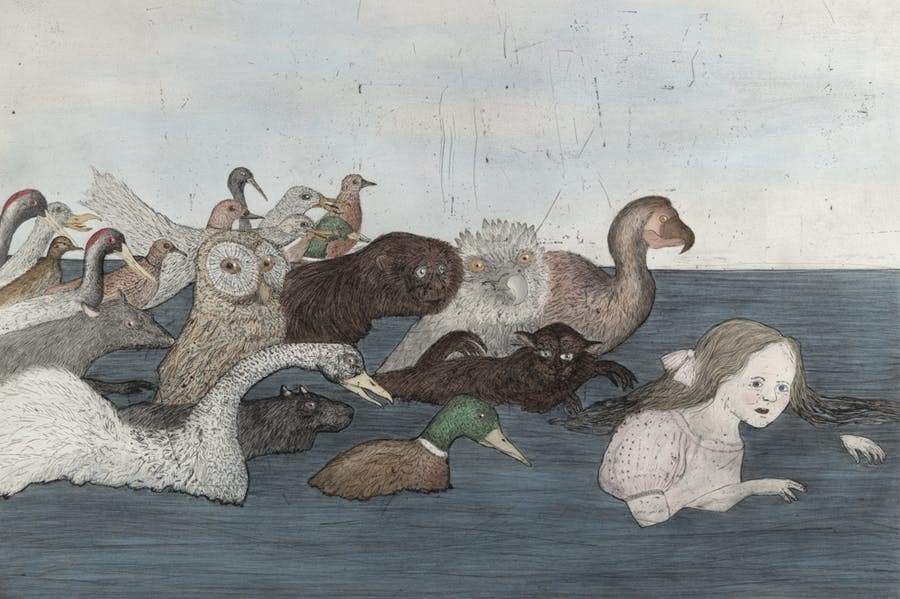
Kiki Smith has been turning to myths and folkloric legends in search of dramatic and darker female personae and has produced a significant body of works referencing fairy tales. Through her work, Smith attempts to grasp the vulnerability of childhood, as depicted in her take on Alice in Wonderland and Little Red Riding Hood.
Everyone knows the story of Alice, who, reduced to the size of a mouse, fell into a pool of her own tears. In Smith’s version of the Lewis Carroll drawing, the tension is almost palpable, with the little girl painfully struggling whilst being chased by a horde of eerie animals.
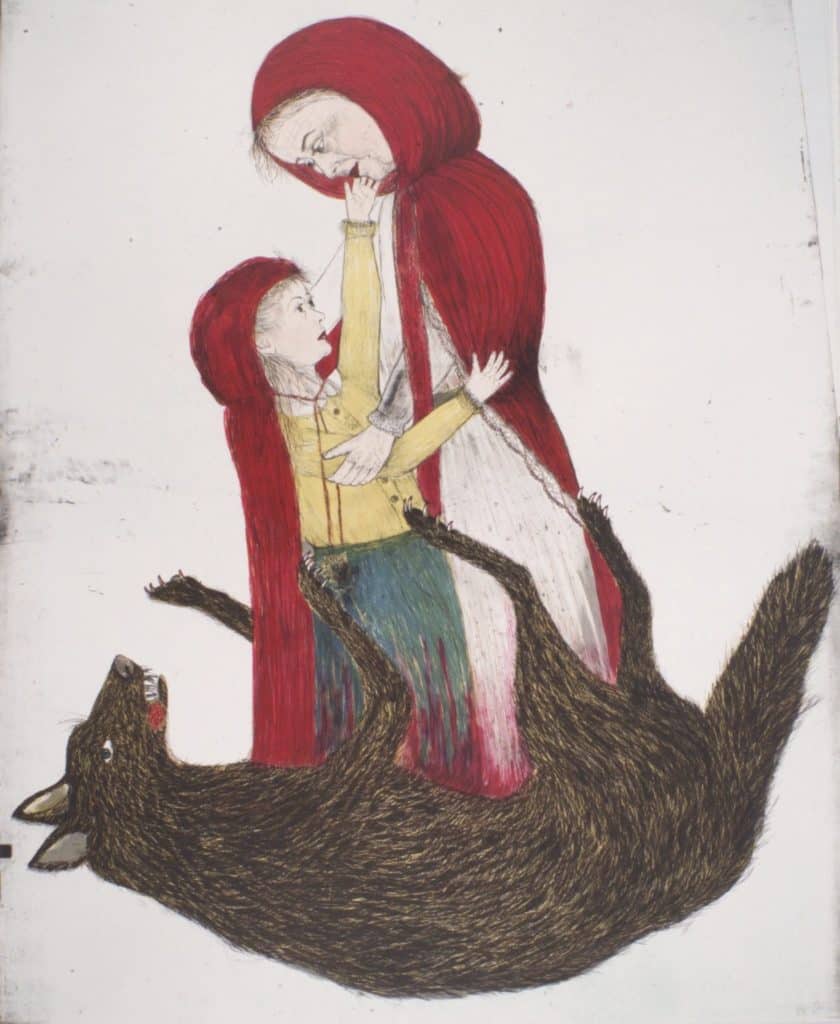
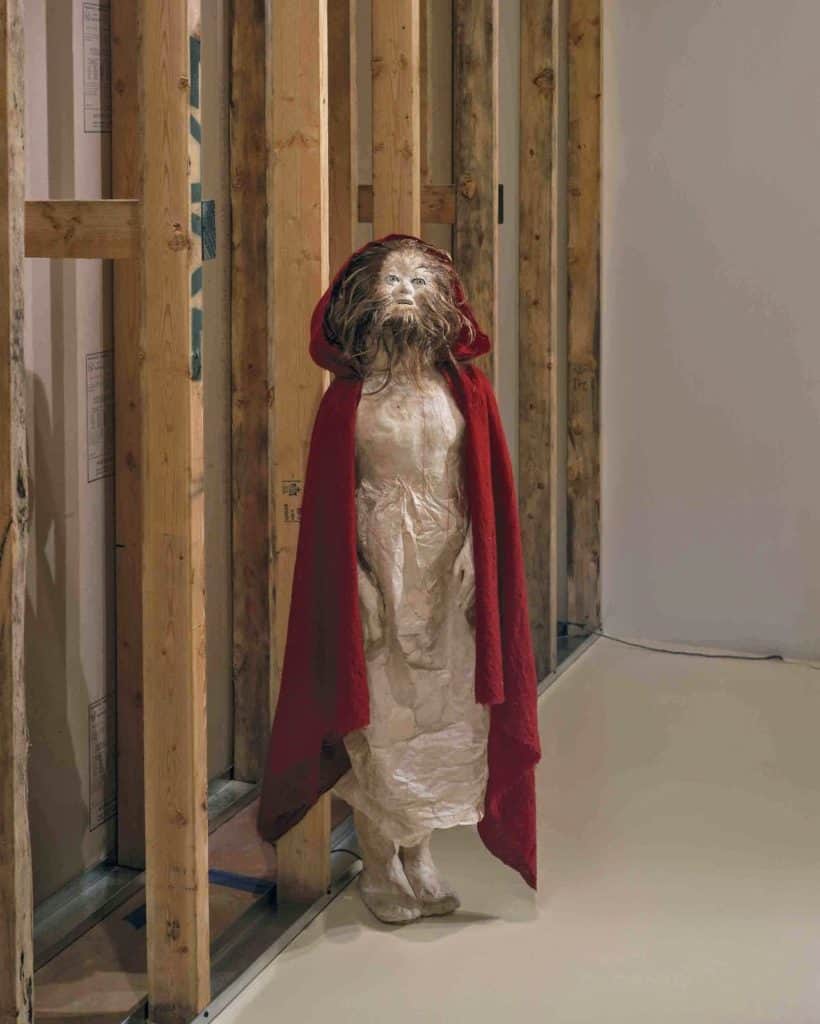
Smith’s interpretation of Little Red Riding Hood is centred around an interrogation of the character’s identities and relationship, hinting both at the original, gruesome plot, and its more recent explorations. For many, the relationship between the girl and the wolf is considered as violent and sexual, but here, Smith rejects this idea and focuses on the similarities and connectiion shared by the pair. With the haunting Daughter, Smith suggests that the wolf and the girl have come together and produced an offspring, uncannily embodying human and animal characteristics, while challenging conventional notions of good and evil.
Paula Rego has also produced a disturbing analyse of the implications of the Little Red Riding Hood tale, as has French Photographer Gérard Rancinan. Rancinan’s retelling of the tale disrupts and inverts its original meaning, depicting Little Red Riding Hood as a male ballet dancer, and the wolf as a caged, wild beast, both at the centre of a blood-splattered crime scene.
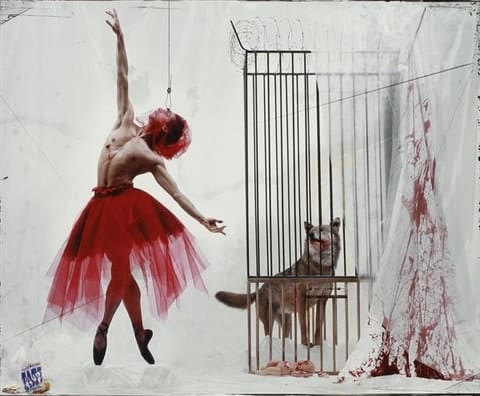
Miwa Yanagi
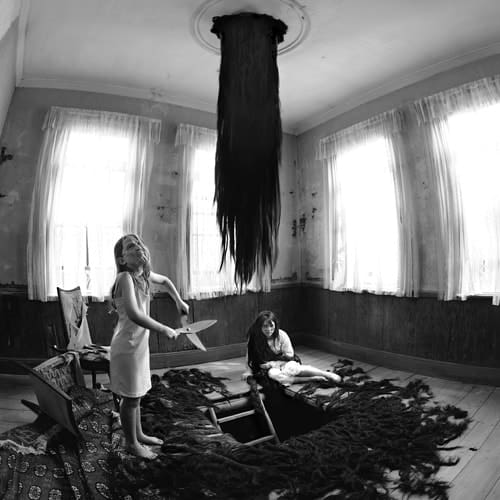
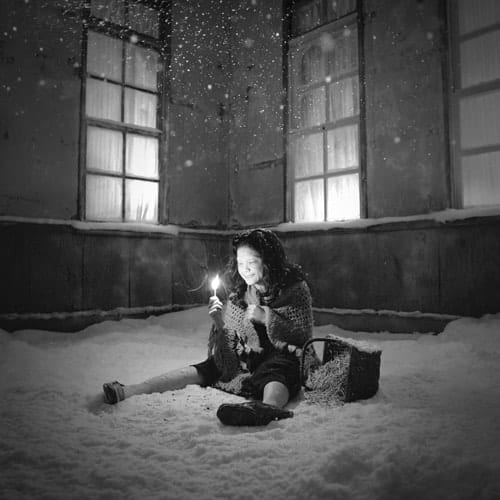
Surreal and disturbingly morbid, Miwa Yanagi’s Fairy Tale series features elaborate black and white scenes, with young girls as models assuming the roles of both victims and perpetrators of gruesome and twisted acts. The stories are unsettling, violent, and confuse the distinction between old age and youth. By juxtaposing these young girls and horrific twists, we come to the realisation that fairy tales might not have been originally intended for children, a position compellingly argued by J.R.R Tolkien, an eminent professor of English Language and Literature at Oxford University, as well as one of the centuries most beloved authors. Using wigs, latex, makeup and other theatrical techniques, Yanagi’s retold fairy tales are haunting and disconcerting, immortalizing the macabre ending of the original stories.
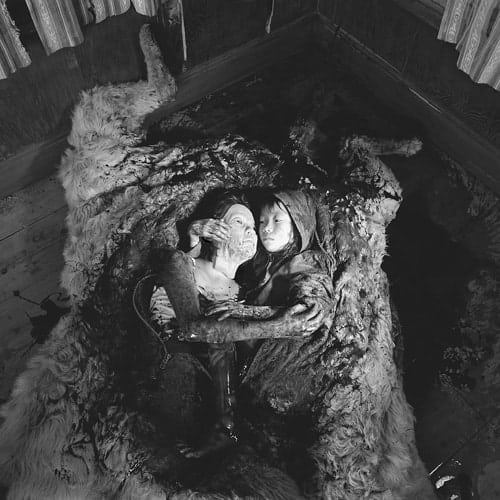
Natalie Frank
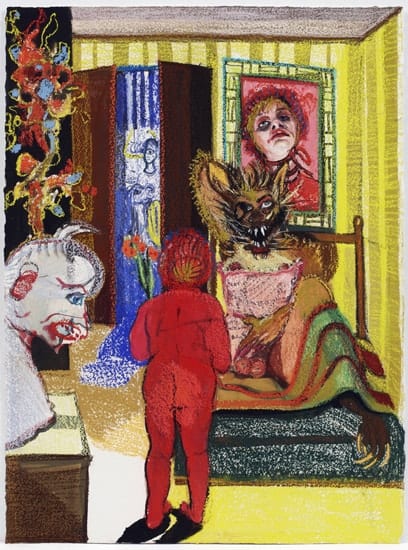
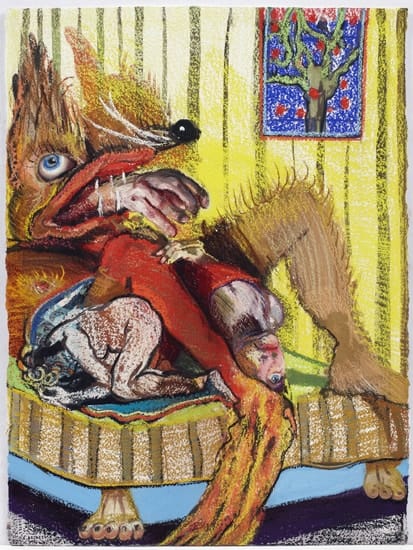
Inspired by the sinister magic pop fairytales and their portrayal of the dark side of humanity, Austin native Natalie Frank deconstructed and rebuilt visually the seemingly simple short stories of the brothers Grimm, unmasking their twisted essence and most compelling denouements in a surrealistically stunning volume. Frank was visiting her friend Paula Rego in London, who encouraged her to look at the Grimm fairy tales and attempt to illustrate the stories en masse, which had never been done before. Enthralled by the themes and dynamics at play in the tales, Frank uncovered in her resplendent illustrations their darkest and most disturbing ambiguities, working exclusively with gouache and pastels.
Using the original narrative as her point of departure, Frank examined the boundless emotional and physical implications of the stories, and how they tackle issues of sexuality, family dynamics, and female empowerment. Dark and nightmarish, her spin on the Grimm fairy tales reconnects the stories with their originally chilling substance, addressing underlying issues of violence, rape, incest and other assaults on humanity perpetrated by humanity, a darkness which during the course of the Twentieth Century was gradually phased out of the tales. Her interpretation of Little Red Riding Hood, Little Red Cap, is startingly unusual, featuring a nude and red-all-over little girl in the first illustration, threatened by a devilish-looking wolf, crudely and aggressively exhibiting his penis. The second illustration for Little Red Cap represents with ferocity the wolf devouring the girl and her grandmother, in a ghastly explosion of limbs. Frank’s un-sanitized yet stunning version of the Brothers Grimm’s fairy tales was considered such a tour de force that it was adapted into an epic Ballet in 2018.
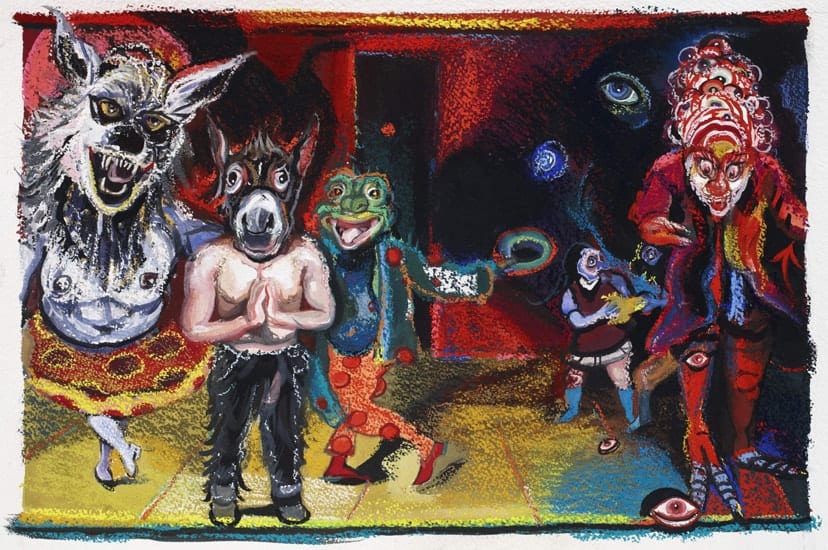
Relevant sources to learn more
Discover the gruesome original endings of some of the most popular fairy tales
Take a look at Miwa Yanagi’s complete Fairy Tale series
Read about Art and Activism